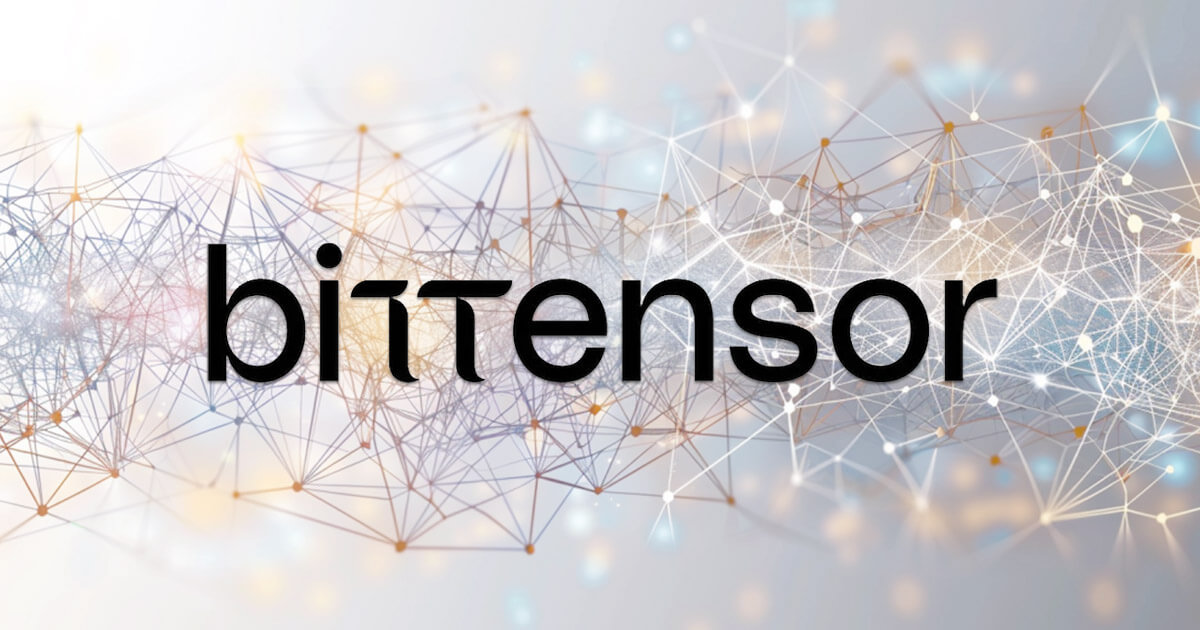Latest News
Why Swiss and Hong Kong crypto regulations will lead the DeFi revolution | MATIC News


The following is a guest post from James Davies, CEO of Crypto Valley Exchange.
Regulators worldwide, international organizations, and market participants have published many consultation papers, recommendations, and opinions. The writers include groups like the Global Financial Markets Association, the Institute of International Finance, the International Swaps and Derivatives Association, the Futures Industry Association, the Financial Services Forum, and IOSCO (International Organization of Securities Commissions).
All major players from Coinbase to Circle are publishing responses to the regulatory framework and legislative drafting worldwide.
All of this is brought together in an IOSCO paper, “Policy Recommendations for Crypto and Digital Asset Markets,” which, rather unbelievably, doesn’t mention permissionless protocols once and only decentralized in passing.
I pity the regulator that bases its crypto policy development on this publication. Separately, IOSCO published a “Policy Recommendation for Decentralized Finance,” which combines their analysis with the Financial Stability Board (FSB) report “The Financial Stability Risks of Decentralised Finance.”
However, and this is a major criticism, the papers miss the core idea of decentralized projects. Trying to succinctly explain where they are wrong and what they can do to shift the perspective takes more input from insiders. The essential goal of decentralized projects is “to create the project features as the result of emergent behaviors through the actions of unrelated and replaceable actors.”
These effects are emergent, making decentralized projects so difficult to regulate. The report makes some reasonable insights, such as run-risk on assets from liquidity mismatch, such as the events that collapsed TerraUSD/Luna, and the roll-forward of this hitting Celsius very reminiscent of the events in 2008, the “collateral chain” risk.
Notably, traditional finance regulators still do not cover this well, where banning new activities dominates integration and understanding.
It also makes valuable points on cross-border regulatory arbitrage; however, this is where it demonstrates very precisely that it doesn’t understand DeFi. These structures make identifying appropriate legal ownership/control and relevant legal authorities difficult. It presupposes that there is a legal ownership and control point, the antithesis of decentralization.
This doesn’t mean that there aren’t some DeFi entities that do have these, and while running via smart contracts on-chain are not more like centralized entities, these, though, will get picked up in the core of the rest of the crypto regulation.
IOSCO doubles down on these misapprehensions about how decentralization works in some of their recommendations to regulators, especially the recommendation to identify responsible persons. Comments suggesting layer-1 blockchains might be considered clearing and settlement operations feel bizarre.
Other areas to look at include leverage, lending pool structures, tokenization, pseudonymous information, reporting, IP, and off-chain/on-chain touchpoints. Continued adoption and growth are undoubted and will have major impacts on world economies and traditional finance over time.
Most notably, every respondent to IOSCO, that is, every major regulator, when asked to provide an overview of current regulatory treatment, stated that they do not have separate regulatory frameworks specially dedicated to DeFi activities. They further note that whilst respondents state that they have regulation for crypto underway, they are not specifically targeting DeFi. Respondents also express their views that existing frameworks can apply to DeFi protocols.
Like social scientists everywhere, the Bank of International Settlement also seeks to understand the DeFi landscape. Their process is being examined through the lens of categorizing DeFi. While they appear to do an adequate job in this respect, it comes across in the conventional manner of treating each project as a standalone company.
To summarize the areas of concern from IOSCO:
- Conflicts of interest arising from vertical integration of activities and functions
- Market manipulation, insider trading, and fraud
- Cross-borderrRisks and regulatory cooperation
- Custody and client asset protection
- Operational and technological risk
- Retail access, suitability, and distribution.
How should regulators look at DeFi?
Rigid classification-based regulation has led to many unintended consequences; Sarbanes-Oxley requirements drove companies away from public markets. The subprime mortgage crisis resulted from a focus on individual loans and not their aggregation. The initial responses to the rise of the Internet and digital business were slow and reactive. By the time regulations arrived, companies already had established practices. Uber and Airbnb’s growth was restricted by a patchwork of local regulations that didn’t support these business models.
Urban planners misunderstood the effect of adding roads, leading to more traffic issues rather than less. The climate models debate focuses on specifics rather than the emergent effects, clouding the issues.
Regulators should start with governance structures, not individual properties. DAOs typically have a presence of some form, such as an organization with a corporate identity, often because a Labs entity needs something to hold the equity to pay real-world bills.
These entities, though, are often controlled entirely through the DAO. Requiring DAO registration and setting up specific corporate entity types that match how they operate would add value. Setting transparency, reporting, voting, staking, delegation, and control rules would remove the ambiguity on how to operate. Weed out abusive entities that want to rug pull and encourage entities that want to operate in a decentralized manner genuinely.
There can be many further developments related to operation style, such as requiring those that border otherwise regulated activities to have the appointed people selected by the DAO to face future regulatory developments in these areas. However, engaging and setting a framework for DAO establishment would be a good start.
A second area for examination would be about mutual recognition, currently regulation is fragmented, in some areas such as derivatives markets mutual recognition works well, in payments and crypto it acts as a barrier to growth creating a difficult patchwork of regulation. If DAO regulation were recognized between major regulators, then regulating in one country would enable access to other countries, a major incentive to projects to choose a grown-up location for their DAO, a good indicator to users of the intent of those involved in the project.
More thought needs to be given to dealing with emergent properties related to aspects such as clearing and settlement. There are compelling reasons why these should exist. For a start, trading on-chain assets supported by on-chain collateral causes real issues for existing traditional finance aspects. We all want to support this tokenization and transparency push, but this doesn’t come without traditional finance equivalents. This is about the disintermediation of existing power bases and control and the empowerment of new economy models, but friction in these systems needs to drop to establish. It is almost the precise point of free markets.
Ethical behavior, transparency, and clarity at the top of the list, along with DAO registration and support, can begin this. Regulators will need to become much more educated in the mechanics of these protocols and their operations to ensure they slowly build the right regulation, not just restrictive regulation.
How Switzerland and Hong Kong have gotten right what the US gets wrong
The crypto industry is still largely in its infancy, and regulators are still figuring out how to oversee its various aspects, but not all efforts are equal.
Once a beacon of innovation, the US has become a challenging jurisdiction for crypto finance projects, let alone decentralized versions. It is well documented how the country’s relatively strong anti-crypto stance and enforcement-heavy approach has stifled growth, driving founders to seek more welcoming environments.
Meanwhile, Switzerland and Hong Kong have crafted regulatory frameworks that accommodate crypto and permissionless projects.
The Swiss Financial Market Supervisory Authority (FINMA) doesn’t regulate protocols based in Switzerland if the activities conducted on the protocol result from the actions of actors based outside Switzerland. They are accessible, transparent, and engaging. Self-regulatory approaches, in general, are well supported.
The Securities and Futures Commission (SFC) of Hong Kong assesses each Defi project on a case-by-case basis, balancing a “same business, same risk, same rules” approach for crypto in general with a more nuanced position on permissionless protocols. At the same time, the US Securities and Exchange Commission (SEC) has confused and caused the US to fall behind the pack.
The EU is focused on examining everything through a payments lens, and the UK talks a better game than it implements. By embracing crypto’s unique needs and fostering a culture of entrepreneurship, these jurisdictions have become the go-to destinations for crypto companies seeking regulatory clarity and freedom to experiment. They are likely to do the same with DeFi.
As DeFi continues to evolve and transform the financial landscape, the role of regulatory frameworks becomes crucial in shaping its trajectory. With digital assets gaining momentum, tokenization under discussion, and traditional finance entering the space, the quest for regulatory environments that not only accommodate but also nurture DeFi is intensifying more even than just centralized crypto entities.
Navigating the DeFi Regulatory Landscape
With the current hot crypto market and lots of capital flowing into projects, the number of projects establishing DAOs over the next 18 months will be huge.
From a regulatory perspective, it’s time for them to set out their intent for these entities and the services that will be possible through these protocols.
Regarding the regulatory landscape for current DeFi projects, we see why more and more industry professionals feel drawn toward Switzerland’s approach. While the EU’s MiCA Regulation offers a comprehensive, harmonized framework with detailed rules for consumer protection and market integrity – appealing for projects seeking a uniform environment for cross-border European operations – Switzerland’s principle-based approach, flexibility is more compelling for projects not focussed on payment services. Not every project fits neatly into a one-size-fits-all mold; Switzerland seems to understand that.
Switzerland’s willingness to foster a supportive ecosystem, exemplified by Crypto Valley in Zug, is remarkable. Being part of a vibrant community with access to capital and opportunities for experimentation and growth is a crypto native’s dream.
Switzerland’s regulatory philosophy and pro-business stance make it particularly appealing. Innovative projects will have a better opportunity, be more likely to get regulatory clarity early and emerge from this thriving ecosystem, pushing DeFi boundaries and shaping finance’s future evolution. Switzerland’s approach resonates persuasively.
Hong Kong: A Financial Renaissance
Hong Kong is redefining its role as a crypto hub by implementing its new Virtual Asset Service Provider (VASP) regime. This regulatory framework introduces a structured yet dynamic environment that supports crypto innovation while maintaining robust safeguards.
The comprehensive VASP licensing ensures crypto platforms meet stringent criteria for liquidity, customer protection, and cybersecurity, fostering a balanced approach to regulation and innovation. By permitting retail trading of cryptocurrencies, Hong Kong nurtures a vibrant ecosystem that attracts retail investors while upholding necessary safeguards. It has yet to develop Defi specific regulation, we can only encourage to look at this holistically, developing DAO regulation first, but the approach to the rest lends confidence that this is a good location for businesses to establish whilst we wait.
Regulatory routes forward
Countries mustn’t follow in the footsteps of those who have failed to innovate in this field. The US, for instance, has been slow to adapt to the changing financial landscape, with regulatory uncertainty stifling growth and innovation. Meanwhile, US companies keep demanding clarity on regulation, with giants like Coinbase and their legal team demanding the SEC engage in rulemaking. Similarly, countries like Japan and South Korea have struggled to integrate crypto into their traditional financial systems, leading to a lack of progress.
Countries, including the US, must divide and approach centralized and decentralized activities differently. Some decentralized activities, such as market rate set risk, have many risks that could be prevented fairly easily under the right approvals regime. We know this will come and squeeze some major players, but early transparency on the direction will save the industry a lot of costs.
Currently, we look to countries like Switzerland and Hong Kong, which have taken a proactive approach to crypto, to lead in creating a supportive regulatory environment that will foster innovation and growth in Defi. By learning from their example, other countries can catch up and move forward rapidly.
While the future of decentralized tech watches the American Dream turn into a coma, Swiss developers are pouring Aperol and planning their ski trips.
Latest News
Crypto VC investment ‘continued rebound’ in Q2 with $3.2 billion invested – Galaxy | MATIC News


Venture capital investments in crypto continued to rebound in the second quarter, with a total $3.2 billion invested during the period — up 28% compared to $2.5 billion in the previous quarter, according to Galaxy Digital latest research report.
The report also identified a 94% quarterly surge in median pre-money valuation, which rose to $37 million from $19 million in the first quarter.
Galaxy noted the second quarter’s median pre-money valuation is the highest since the fourth quarter of 2021 and represents an almost all-time high. It attributed the surge to a more competitive market, giving companies greater negotiation leverage in deals.
Meanwhile, the second quarter median deal size grew to $3.2 million from $3 million, up 7% after remaining largely steady for five quarters. Deal count fell to 577 in the second quarter, down from 603 in the first quarter but up from less than 400 in the fourth quarter of 2023.
According to the report:
“Despite a lack of available investment capital compared to previous peaks, the resurgence of the crypto market… is leading to significant competition and [FOMO] among investors.”
The report highlighted a positive shift in crypto venture capital sentiment, buoyed by a nearly 50% year-to-date rise in Bitcoin and Ethereum prices. If the trend continues, 2024 will have the third-highest investment capital and deal count numbers after the bull markets of 2021 and 2022.
However, the report also noted that despite Bitcoin experiencing a significant rise since January 2023, venture capital activity has not kept pace, trading well below the levels seen when the flagship crypto last traded above $60,000 in 2021 and 2022.
The divergence is attributed to several factors, including crypto-native catalysts like Bitcoin ETFs and emerging areas such as restaking and Bitcoin Layer 2 solutions. Additionally, pressures from crypto startup bankruptcies, regulatory challenges, and macroeconomic headwinds, particularly interest rates, have collectively contributed to the breakdown.
Other data and trends
Specific project categories led fundraising — including Web3, which brought in $758 million or 24% of all capital. Infrastructure brought in over $450 million (15%), trading and exchanges brought in under $400 million (12%), and Layer 1 brought in under $400 million (12%).
Bitcoin Layer 2 networks continued to see significant investments of $94.6 million, up 174% on a quarterly basis. Galaxy said “investor excitement remains high” around the possibility of composable blockspace attracting DeFi and NFT projects to Bitcoin.
US companies dominated VC investment, attracting 53% of all capital and 40% of deals. Galaxy said US dominance exists despite regulatory change that could cause companies to leave the country and warned policymakers to be aware of their impact.
Early-stage firms received about 78% of capital, while late-stage companies received 20% of all capital. Galaxy said that larger general VC firms have left the sector or scaled down their activity, reducing the ability of later-stage startups to raise money.
Mentioned in this article
Latest News
Bittensor proposes burning 10% supply to stabilize TAO following $8 million exploit | MATIC News


OpenTensor Foundation (OTF) has proposed burning 10% of the Bitttensor (TAO) supply to stabilize the token’s price in response to a recent exploit that led to the loss of $8 million worth of the tokens.
The decentralized AI network has put forward a vote for users to decide on the burn. Active voters participating in the proposal will be rewarded with compensatory DAO rewards at a later date.
The exploit, which occurred on July 2, saw a Bittensor user lose 32,000 TAO tokens due to a leaked private key. The incident caused an immediate 15% drop in TAO’s price, hitting a six-month low of $227. The price has since rebounded slightly to $240.
Attack timeline
The attack timeline reveals that the incident began on July 2 at 7:06 P.M. UTC when funds started being transferred out of wallets.
OTF detected the abnormal transfer volume and initiated a war room by 7:25 P.M. UTC, and by 7:41 P.M. UTC, the team had neutralized the attack by placing validators behind a firewall and activating safe mode to prevent nodes from connecting to the chain.
During this period, the network was configured to only produce blocks, halting all transactions to prevent further losses and allowing time for a thorough investigation.
The root cause of the attack was traced back to a malicious package in the PyPi Package Manager version 6.12.2, which compromised user security. The package, posing as a legitimate Bittensor package, contained code designed to steal unencrypted coldkey details.
When users downloaded this package and decrypted their coldkeys, the decrypted bytecode was sent to a remote server controlled by the attacker.
The incident prompted an immediate response from the OTF team, which prioritized the security breach over regular updates and maintenance. The disruption has been a significant test for the network, highlighting both its vulnerabilities and the resilience of its infrastructure.
Aftermath
Despite the severity of the attack, some validators, such as RoundTable 21, confirmed that their delegators’ funds remained secure, emphasizing that the exploit did not impact all users uniformly.
However, the decision to halt the chain has led to a debate within the community about its implications for Bittensor’s claim of decentralization. Critics argue that the ability to pause the chain contradicts the principles of a decentralized AI network, while supporters believe it was necessary to protect users’ assets.
OTF plans to gradually resume normal operations of the Bittensor blockchain, ensuring a safe and responsible approach. Regular progress updates will be provided to the community.
As a precaution, users who suspect their wallets were compromised are advised to create new wallets and transfer their funds once the blockchain resumes normal operation. Additionally, upgrading to the latest version of Bittensor is strongly recommended.
Moving forward, Bittensor will implement enhanced package verification processes, increase the frequency of security audits, adopt best practices in public security policies, and improve monitoring and logging of package uploads and downloads.
The proposed token burn and ongoing security enhancements aim to restore confidence in the TAO ecosystem. The outcome of the vote will play a crucial role in stabilizing and securing the network, with the community eagerly awaiting further updates from the developers.
Mentioned in this article
Latest News
Europe’s largest Bitcoin miner Northern Data to launch IPO in the US | MATIC News


Europe’s largest Bitcoin miner, Northern Data AG, has announced plans for a substantial initial public offering (IPO) in the US at a valuation between $10 billion and $16 billion.
The IPO, which will be held on the Nasdaq stock exchange, is scheduled for the first half of 2025 and may also include selling a minority stake to investors prior to the public listing.
Following the IPO announcement, Northern Data’s shares on the XETRA stock exchange surged by over 5%, reaching €25. This positive market reaction indicates strong investor confidence in the company’s future prospects. The firm first considered an IPO in 2021 but decided against it at the time.
The upcoming offering will highlight two of Northern Data’s key business units: Taiga, which handles the company’s cloud computing activities, and Ardent, which manages its data centers. Both units are crucial to Northern Data’s strategy to capitalize on the rapidly expanding AI sector.
The crypto industry continues to face regulatory challenges. Previous attempts by digital asset firms to go public, including Circle, encountered difficulties due to regulatory scrutiny. However, Northern Data’s focus on AI and cloud computing may help it navigate these challenges more effectively.
AI pivot
Originally founded as Northern Bitcoin AG, Northern Data has grown into a significant player in the Bitcoin mining industry. In recent years, the company has diversified its operations to include artificial intelligence (AI) and cloud computing, responding to the decreasing profitability of Bitcoin mining and the growing opportunities in these fields.
In November 2023, Northern Data secured $610 million in debt financing from Tether. The investment is intended to strengthen Northern Data’s AI and cloud computing operations.
The financing followed a strategic partnership between the two companies announced in September 2023. The partnership aimed to focus on AI, peer-to-peer communications, and data storage solutions.
Northern Data’s pivot towards AI and cloud computing reflects a broader industry trend. As the profitability of Bitcoin mining declines, many companies, including Core Scientific and Hut 8 Corp, are exploring new revenue streams.
Committed to Bitcoin mining
While diversifying its business, Northern Data remains committed to Bitcoin mining and plans to continue expanding its footprint in the industry.
Peak Mining, the company’s US-based Bitcoin mining unit, is a significant part of its operations, with nearly 700 megawatts of high-performance computing data centers. In 2023, Peak Mining mined 2,298 BTC, generating over $64 million in revenue despite an 18% year-over-year decrease in production.
Northern Data’s presence in the US has been growing steadily. In May, the company acquired its second 300-megawatt mining site, further solidifying its position in the American market. The expansion highlights Northern Data’s long-term commitment to Bitcoin mining, even as it explores new technological frontiers.
Mentioned in this article
-

 Hot Projects4 months ago
Hot Projects4 months agoBitcoin Blasts Past $70,000 to Register New All-Time High | MATIC News
-

 Latest News4 months ago
Latest News4 months agoCourt upholds SEC’s unregistered securities claims against Gemini, Genesis’ Earn program | MATIC News
-
Hot Projects2 months ago
Bitcoin Will Be Set For New ATHs If It Breaks This Resistance: Analyst | MATIC News
-

 Latest News2 months ago
Latest News2 months agoSix Coinbase customers claim the exchange is violating securities laws in new lawsuit | MATIC News
-

 Hot Projects3 months ago
Hot Projects3 months agoBitcoin ETF Inflows Could Eclipse $1 Trillion, Predicts Bitwise CIO | MATIC News
-

 Hot Projects3 months ago
Hot Projects3 months agoOndo Finance Joins BlackRock Tokenized Fund As Inflows Surpass $160M | MATIC News
-

 Latest News4 months ago
Latest News4 months agoOver $1 billion wiped off HEX’s valuation following Richard Heart’s disparaging remarks | MATIC News
-

 Latest News2 months ago
Latest News2 months agoNew Hampshire representative proposes Bitcoin ETF investment to address state financial liabilities | MATIC News


